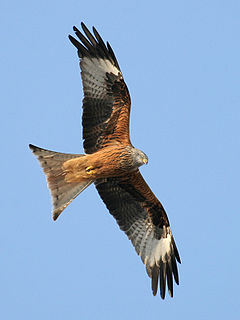The Red Kite
 The sight of a majestic Red Kite soaring over Swindon, Lydiard Park and the surrounding countryside is now quite familiar. Five hundred years ago this would also have been the case; in the Middle Ages they were well known as scavengers that lived on carrion and any rubbish that they could find. They were not particularly popular – in Shakespeare’s play King Lear, Lear describes his daughter Goneril as a “detested kite” and Shakespeare also wrote “when the kite builds (a nest), look to your lesser linen” in reference to them stealing washing hung out to dry. As early as the mid-fifteenth they were hunted in Scotland although until the Tudor period they were tolerated in England and Wales because they kept the streets free of rotting food and carrion. However under the Tudor vermin acts of 1532 and 1566 they were outlawed.
The sight of a majestic Red Kite soaring over Swindon, Lydiard Park and the surrounding countryside is now quite familiar. Five hundred years ago this would also have been the case; in the Middle Ages they were well known as scavengers that lived on carrion and any rubbish that they could find. They were not particularly popular – in Shakespeare’s play King Lear, Lear describes his daughter Goneril as a “detested kite” and Shakespeare also wrote “when the kite builds (a nest), look to your lesser linen” in reference to them stealing washing hung out to dry. As early as the mid-fifteenth they were hunted in Scotland although until the Tudor period they were tolerated in England and Wales because they kept the streets free of rotting food and carrion. However under the Tudor vermin acts of 1532 and 1566 they were outlawed.
The vermin acts were drawn up to counter food shortages and the spread of disease caused by a series of bad harvests and a sharp rise in population. Henry VIII put a bounty on each creature, ranging from a penny for the head of a kite or a raven to 12 pence for a badger or a fox. These were considerable sums when the average agricultural wage was around four pence a day. All parishes had to raise a levy to pay for the bounties, while communities that failed to kill enough animals were punished with fines. The acts were so successful that they drove a number of species to extinction or the edge of it, including red kites.
Happily the reintroduction of the birds to Britain must rate as one of the conservation success stories of recent times. When four birds were released in the Chilterns in the later 1980s it was impossible to imagine that within 30 years they would recolonise England so successfully.
Red Kites are large birds with long-wings and a long tail. They can be distinguished from buzzards by being slightly bigger but less stocky birds with more pointed wings. When caught in the sunshine their rufous red body, dark wing tips and paler head and outer wings look very striking. Their defining feature is their long, red tail, which is deeply forked and used as a stabiliser in flight.